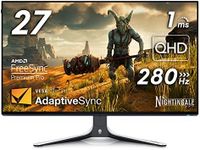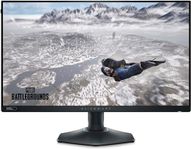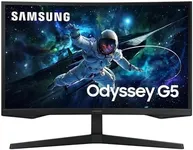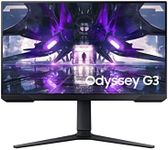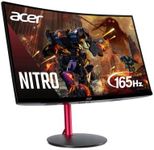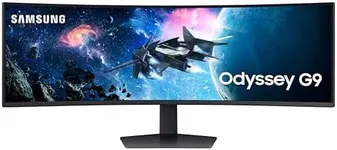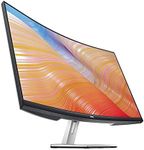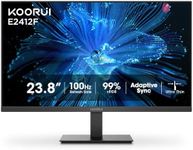Buying Guide for the Best Computer Monitors
Choosing the right computer monitor can make a big difference in your daily comfort, productivity, and enjoyment, whether you use your computer for work, gaming, or general browsing. The best monitor for you depends on how you plan to use it, the space you have available, and your personal preferences for things like image quality and screen size. Understanding the key specifications will help you make a choice that fits your needs and ensures you get the most out of your computer experience.Screen SizeScreen size refers to the diagonal measurement of the display, usually given in inches. A larger screen can make multitasking easier and provide a more immersive experience, especially for gaming or watching videos. Smaller screens are more compact and fit better in tight spaces. Generally, screens under 24 inches are good for basic tasks and small desks, 24-27 inches are versatile for most uses, and 28 inches or larger are great for multitasking, creative work, or entertainment. Think about your desk space and how far you sit from the monitor to decide what size will be comfortable for you.
ResolutionResolution is the number of pixels displayed on the screen, which affects how sharp and clear images and text appear. Common resolutions include Full HD (1920x1080), Quad HD (2560x1440), and 4K (3840x2160). Higher resolutions provide more detail and allow you to fit more on the screen, but they also require more powerful hardware to run smoothly. For everyday tasks, Full HD is usually enough, while Quad HD or 4K is better for creative work, gaming, or if you want extra clarity. Choose a resolution that matches your needs and your computer’s capabilities.
Refresh RateRefresh rate is measured in hertz (Hz) and tells you how many times per second the screen updates its image. A higher refresh rate makes motion look smoother, which is especially important for gaming or fast-paced video. Standard monitors have a 60Hz refresh rate, which is fine for most uses. Gamers often prefer 120Hz, 144Hz, or even higher for a more responsive experience. If you mostly browse the web or work with documents, 60Hz is sufficient, but if you play a lot of games or watch a lot of action videos, a higher refresh rate can be a good choice.
Panel TypePanel type refers to the technology used to create the image on the screen. The most common types are IPS, TN, and VA. IPS panels offer the best color accuracy and viewing angles, making them great for creative work and general use. TN panels are usually faster and cheaper, but have poorer color and viewing angles, so they’re often chosen for competitive gaming. VA panels have better contrast and deeper blacks, which is good for watching movies. Think about what matters most to you—color quality, speed, or contrast—when choosing a panel type.
ConnectivityConnectivity refers to the types and number of ports available on the monitor, such as HDMI, DisplayPort, USB, and sometimes older options like VGA. More ports give you flexibility to connect different devices, like computers, laptops, or game consoles. Make sure the monitor has the right ports for your devices, and consider if you need extra features like USB hubs for charging or connecting accessories. Check what your computer supports and pick a monitor that matches.
Ergonomics and AdjustabilityErgonomics and adjustability describe how much you can change the monitor’s position, such as tilting, swiveling, height adjustment, or rotating to portrait mode. Good adjustability helps you set up the monitor for comfortable viewing and can reduce neck and eye strain. If you spend long hours at your desk, look for a monitor with a stand that lets you adjust it to your preferred position. If you have limited space or want to mount the monitor on a wall or arm, check for VESA mount compatibility.
Color Accuracy and CoverageColor accuracy and coverage refer to how well the monitor displays colors compared to real life and how much of the color spectrum it can show. This is especially important for photographers, designers, and anyone who works with images or video. Monitors with high color accuracy and wide color coverage (like sRGB, Adobe RGB, or DCI-P3) are best for creative work. For general use, standard color accuracy is usually fine, but if you care about true-to-life colors, look for monitors that advertise good color performance.
Response TimeResponse time measures how quickly a pixel can change from one color to another, usually in milliseconds (ms). Lower response times mean less motion blur, which is important for gaming and fast-moving video. Typical response times range from 1ms (very fast) to 8ms or more. For everyday use, response time isn’t a big concern, but if you play a lot of fast-paced games, look for a monitor with a lower response time for smoother visuals.

